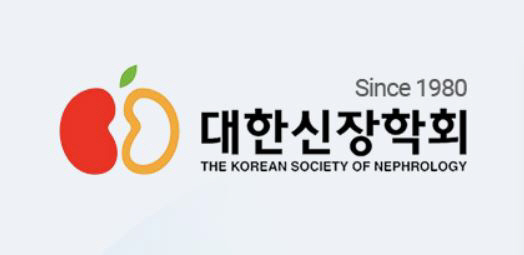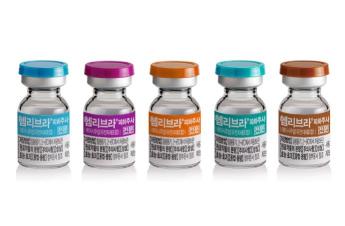1 in 4 people over 70s chronic kidney disease...COVID-19 Pandemic Level Measures Needed
Jun 20, 2025
"Now, chronic kidney disease has come at a time when the state needs to take the lead in management like tuberculosis management."
Chairman Park Hyung-cheon's remarks were made at the KSN 2025 press conference, the annual academic conference of the Korean Kidney Association.
Chronic kidney disease is reported to be responsible for approximately 10% to 12% of the global adult population. In particular, about 5 million adults in Korea are estimated to have chronic kidney disease due to diabetes, high blood pressure, obesity, and the increase in the elderly population, which is expected to increase year by year.
According to data from the National Health and Nutrition Survey (KNHANES), the prevalence of chronic kidney disease increased with age in 2023, with 25.1% of those in their 70s and older. More than 30% of diabetics have chronic kidney disease.
This trend is similar worldwide, and in the United States, Japan, and Taiwan, state-led comprehensive prevention and management measures have already been established and implemented as long-term plans.
In the United States, the CKD Surveillance System has been in operation at the U.S. Centers for Disease Control and Prevention (CDC) since 2006, and the National-Local-Japanese Kidney Society has also gathered in Japan to establish the CKD Initiative Japan to carry out a 10-year long-term plan.
In Korea, the 5th National Health Promotion Comprehensive Plan (HP2030) is being implemented by the government from 2021 to 2030. Measures have been established and are underway for many diseases such as diabetes, high blood pressure, cardiovascular disease, dementia, suicide prevention, and oral health, but unfortunately, chronic kidney disease is not included.
Patients with chronic kidney disease have three to five times higher risk of cardiovascular disease (myocardial infarction, stroke) than the general population, and if the kidney score falls below 30 points, complications such as anemia, bone metabolism, electrolyte imbalance (hyperkalemia), and uremia are greatly reduced in quality of life.
In addition, dialysis (blood dialysis, peritoneal dialysis) or kidney transplantation is required when terminal kidney disease occurs, and early detection, early treatment, and prevention are most urgent as a progressive disease in which mortality and morbidity increase rapidly.
The cost of treatment in the early stages of chronic kidney disease is relatively low, but if it progresses to terminal kidney disease, the annual treatment cost will surge to tens of millions of won. The annual medical cost per dialysis patient is about 40 million won to 50 million won (data from the Korea Appraisal Board), which is a big burden to the national medical security system.
The biggest problem is that when chronic kidney disease patients in the working age group suffer from labor loss and early retirement, economic difficulties for individuals and families increase, and catastrophic losses occur, reaching trillions of won every year as social costs.
Therefore, the Korean Kidney Society is promoting the KHP 2033 (Kidney Health Plan), a 10-year vision for improving national kidney health, from 2023. ▲The number of patients with chronic kidney disease expected to decrease by 10% ▲The proportion of patients with end-stage diabetes will decrease by 10% ▲The mission is to promote 33% of patients with end-stage kidney disease (peritoneal dialysis and organ transplantation).
The Korean Kidney Society has submitted policy proposals to the new government and policy proposals jointly with the KHP 2030 Committee and the Korean Home Medical Association. We will continue to make efforts to come up with pan-governmental measures for the health of the people's kidneys," he stressed.
Chairman Park Hyung-cheon's remarks were made at the KSN 2025 press conference, the annual academic conference of the Korean Kidney Association.
Chronic kidney disease is reported to be responsible for approximately 10% to 12% of the global adult population. In particular, about 5 million adults in Korea are estimated to have chronic kidney disease due to diabetes, high blood pressure, obesity, and the increase in the elderly population, which is expected to increase year by year.
According to data from the National Health and Nutrition Survey (KNHANES), the prevalence of chronic kidney disease increased with age in 2023, with 25.1% of those in their 70s and older. More than 30% of diabetics have chronic kidney disease.
This trend is similar worldwide, and in the United States, Japan, and Taiwan, state-led comprehensive prevention and management measures have already been established and implemented as long-term plans.
In the United States, the CKD Surveillance System has been in operation at the U.S. Centers for Disease Control and Prevention (CDC) since 2006, and the National-Local-Japanese Kidney Society has also gathered in Japan to establish the CKD Initiative Japan to carry out a 10-year long-term plan.
In Korea, the 5th National Health Promotion Comprehensive Plan (HP2030) is being implemented by the government from 2021 to 2030. Measures have been established and are underway for many diseases such as diabetes, high blood pressure, cardiovascular disease, dementia, suicide prevention, and oral health, but unfortunately, chronic kidney disease is not included.
Patients with chronic kidney disease have three to five times higher risk of cardiovascular disease (myocardial infarction, stroke) than the general population, and if the kidney score falls below 30 points, complications such as anemia, bone metabolism, electrolyte imbalance (hyperkalemia), and uremia are greatly reduced in quality of life.
In addition, dialysis (blood dialysis, peritoneal dialysis) or kidney transplantation is required when terminal kidney disease occurs, and early detection, early treatment, and prevention are most urgent as a progressive disease in which mortality and morbidity increase rapidly.
The cost of treatment in the early stages of chronic kidney disease is relatively low, but if it progresses to terminal kidney disease, the annual treatment cost will surge to tens of millions of won. The annual medical cost per dialysis patient is about 40 million won to 50 million won (data from the Korea Appraisal Board), which is a big burden to the national medical security system.
The biggest problem is that when chronic kidney disease patients in the working age group suffer from labor loss and early retirement, economic difficulties for individuals and families increase, and catastrophic losses occur, reaching trillions of won every year as social costs.
Therefore, the Korean Kidney Society is promoting the KHP 2033 (Kidney Health Plan), a 10-year vision for improving national kidney health, from 2023. ▲The number of patients with chronic kidney disease expected to decrease by 10% ▲The proportion of patients with end-stage diabetes will decrease by 10% ▲The mission is to promote 33% of patients with end-stage kidney disease (peritoneal dialysis and organ transplantation).
The Korean Kidney Society has submitted policy proposals to the new government and policy proposals jointly with the KHP 2030 Committee and the Korean Home Medical Association. We will continue to make efforts to come up with pan-governmental measures for the health of the people's kidneys," he stressed.
|
This article was translated by Naver AI translator.














